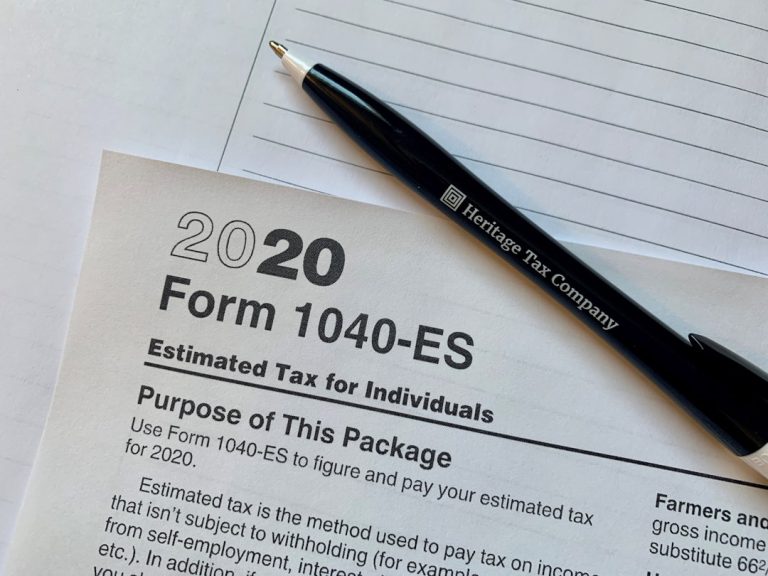alt: a close up of a typewriter with a tax heaven sign on it
title: SEIS/EIS Tax Incentives
SEO Meta Description: Learn the key differences between SEIS and EIS tax incentives and why they are crucial for early stage businesses seeking investment.
Introduction
Navigating the funding landscape can be challenging for early stage businesses, especially when seeking investment opportunities that offer significant tax benefits. The Seed Enterprise Investment Scheme (SEIS) and the Enterprise Investment Scheme (EIS) are two pivotal UK government initiatives designed to stimulate investment in startups and growing businesses. Understanding the SEIS/EIS tax incentives is essential for both entrepreneurs and investors aiming to maximize their financial benefits while fostering innovation and growth.
What is SEIS?
The Seed Enterprise Investment Scheme (SEIS) is a government-backed initiative aimed at encouraging investment in very early-stage companies. SEIS offers investors substantial tax reliefs, including:
- 50% income tax relief on investments up to £100,000 per tax year.
- Capital Gains Tax (CGT) reinvestment relief, allowing investors to defer CGT on other investments by reinvesting gains into SEIS-eligible companies.
- 100% exemption from Inheritance Tax (IHT) after holding shares for at least two years.
SEIS is tailored for startups that are in the nascent stages of their development, typically those with fewer than 25 employees and less than £200,000 in assets.
What is EIS?
The Enterprise Investment Scheme (EIS) targets slightly more mature but still small businesses seeking additional capital for expansion. EIS provides investors with:
- 30% income tax relief on investments up to £1 million per tax year, or £2 million if invested in knowledge-intensive companies.
- Capital gains deferral, allowing investors to defer CGT by reinvesting gains into EIS-eligible shares.
- Potential for loss relief if the investment does not perform as expected.
- 100% exemption from Inheritance Tax after holding shares for at least two years.
EIS is suitable for businesses with up to 250 employees (or 500 for knowledge-intensive companies) and gross assets not exceeding £15 million.
SEIS vs EIS: Key Differences
Target Companies and Stage of Growth
- SEIS: Geared towards very early-stage startups, often pre-revenue or just beginning to generate revenue.
- EIS: Suited for more established businesses with some market traction, seeking funds to scale operations, develop new products, or enter new markets.
Investment Limits
- SEIS: Companies can raise up to £250,000 in total, with a combined cap of £350,000 when including other schemes.
- EIS: Allows companies to raise up to £5 million annually, or £10 million for knowledge-intensive firms, with a lifetime limit of £12 million (£20 million for knowledge-intensive companies).
Investor Tax Benefits
- SEIS offers more generous tax reliefs to compensate for higher investment risk, including 50% income tax relief and significant CGT exemptions.
- EIS provides 30% income tax relief and benefits like capital gains deferral, appealing to investors looking for substantial yet moderately risky opportunities.
Eligibility Criteria
SEIS Eligibility
A company must meet the following to qualify for SEIS:
- Fewer than 25 full-time employees.
- Gross assets do not exceed £350,000 before SEIS investment.
- Less than 3 years old at the time of investment.
- Must carry out a qualifying trade in the UK.
- Must hold a valid SEIS certificate issued by HMRC.
EIS Eligibility
For EIS eligibility, a company must:
- Have fewer than 250 full-time employees (or 500 for knowledge-intensive).
- Gross assets do not exceed £15 million before investment, rising to £16 million post-investment.
- Be less than 7 years old (10 years for knowledge-intensive companies) from the first commercial sale.
- Operate a qualifying trade in the UK.
- Hold a valid EIS certificate issued by HMRC.
How to Invest under SEIS and EIS
Investment Limits
- SEIS: Investors can invest up to £200,000 per tax year.
- EIS: Investors are limited to £1 million per tax year, or £2 million for knowledge-intensive companies.
Restrictions
- Shares must be ordinary, non-redeemable, and carry no preferential rights.
- Investors cannot own more than 30% of the company’s total shares.
- Connected individuals, such as employees or significant shareholders, are generally excluded unless specific conditions are met.
Can You Raise SEIS and EIS at the Same Time?
Yes, a company can utilize both SEIS and EIS to maximize funding opportunities. Typically, a company will first raise up to £250,000 under SEIS and then proceed to raise additional funds under EIS, adhering to the respective investment limits. This phased approach allows startups to benefit from the more generous SEIS tax reliefs during their early, higher-risk stages and then leverage EIS for further growth.
Important: Obtaining advance assurance from HMRC is highly recommended before initiating this process, as it provides investors with confidence regarding the eligibility of the company for SEIS/EIS tax reliefs.
Uses of SEIS and EIS Funding
Funding received through SEIS and EIS can be allocated towards:
- Business Growth and Expansion: Hiring new staff, entering new markets, scaling operations.
- Product Development: Creating new products or enhancing existing offerings.
- Marketing and Sales: Executing marketing campaigns and customer acquisition strategies.
- Research and Development (R&D): Conducting research or developing new technologies.
- Purchase of Assets: Acquiring necessary equipment, software, or machinery.
Restrictions:
- Cannot be used to repay existing debts.
- Cannot be used for acquiring shares in other companies.
- Not permissible for property development projects.
Why Choose Oriel IPO for SEIS/EIS Tax Incentives
Navigating the complexities of SEIS/EIS tax incentives requires a platform that understands both the needs of startups and the expectations of investors. Oriel IPO stands out as an innovative online investment marketplace tailored to facilitate seamless connections between UK startups and investors, leveraging the advantages of SEIS/EIS tax incentives.
Key Benefits of Oriel IPO:
- Commission-Free Funding: Eliminates commission fees, ensuring that more of the investment goes directly to the startups.
- Curated Investment Opportunities: Offers a selection of vetted, tax-efficient investment options tailored to the SEIS/EIS criteria.
- Educational Resources: Provides comprehensive guides, calculators, and industry insights to empower users with knowledge about SEIS/EIS benefits.
- Subscription-Based Access: Features multiple subscription tiers, including a free trial, to cater to both novice and experienced investors.
Addressing the Challenges:
- Simplified Investment Process: Streamlines the investment journey, making it easier for entrepreneurs to connect with angel investors.
- Community Support: Fosters a supportive environment for both startups and investors, enhancing the overall investment culture in the UK.
- Strategic Growth Plans: Focuses on strategic initiatives like FCA regulation pursuit, optimizing user conversion, and expanding service offerings to build a robust investment ecosystem.
By choosing Oriel IPO, startups can efficiently access funding while investors can discover high-potential investment opportunities, all within a platform dedicated to transparency, education, and growth.
Conclusion
Understanding the distinctions between SEIS and EIS tax incentives is crucial for early stage businesses seeking investment and investors aiming to maximize their tax benefits. These schemes not only provide significant financial advantages but also play a pivotal role in fostering innovation and economic growth within the UK startup ecosystem.
To seamlessly navigate these opportunities and connect with the right investment partners, platforms like Oriel IPO are invaluable. By offering commission-free funding, curated investment options, and extensive educational resources, Oriel IPO empowers both startups and investors to thrive in a competitive landscape.



